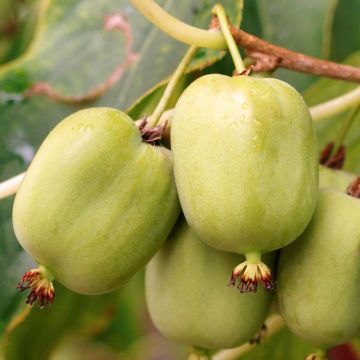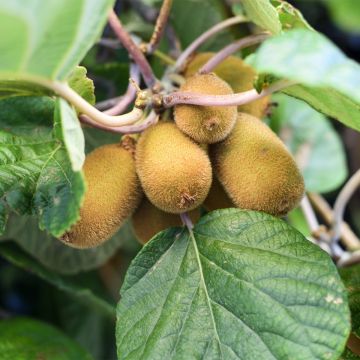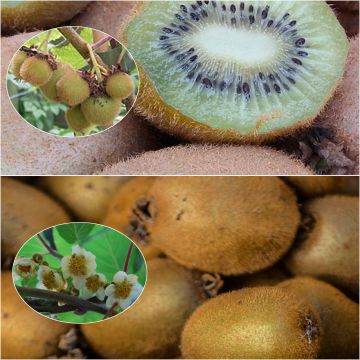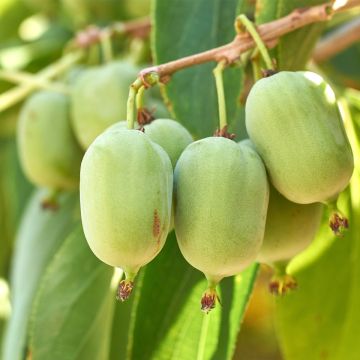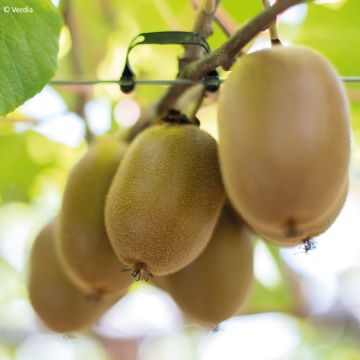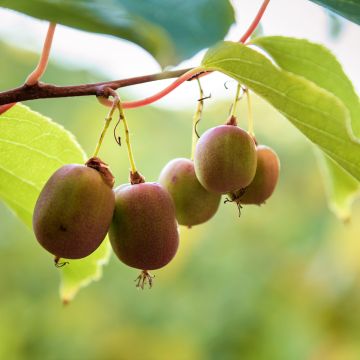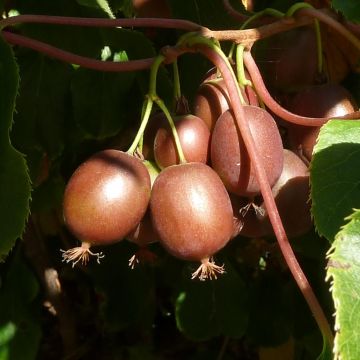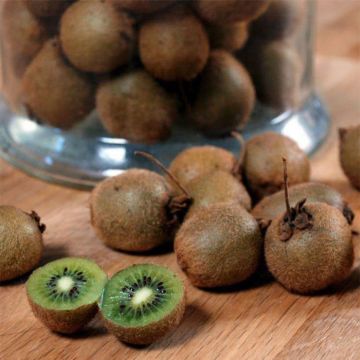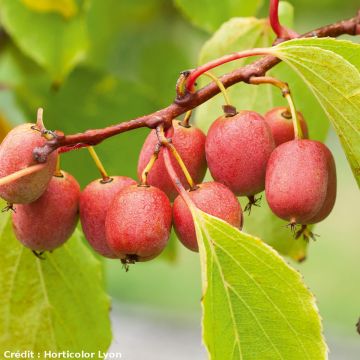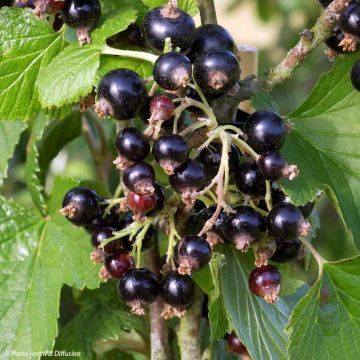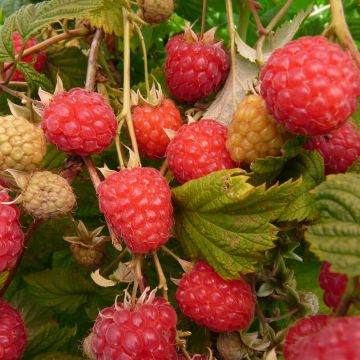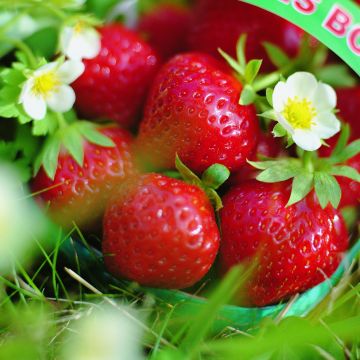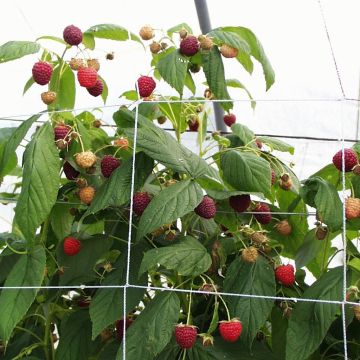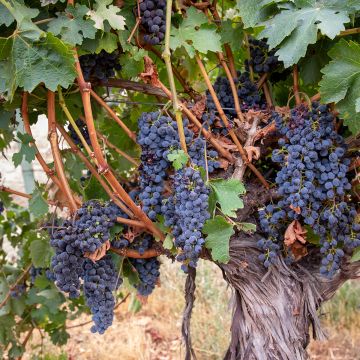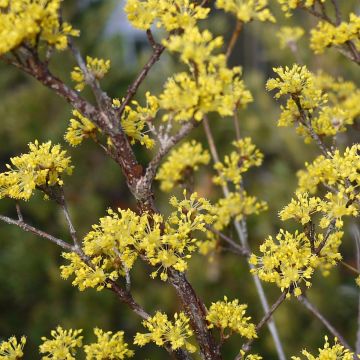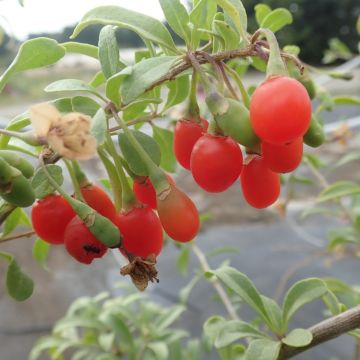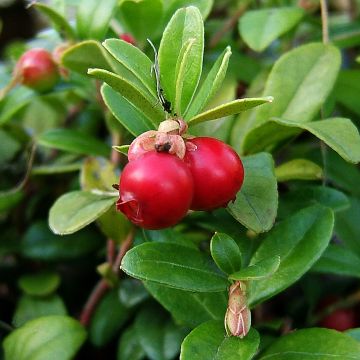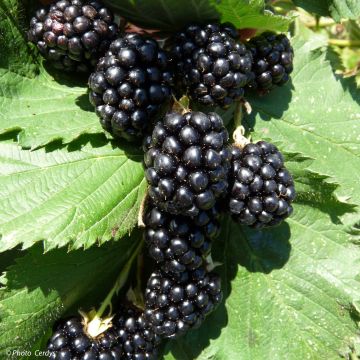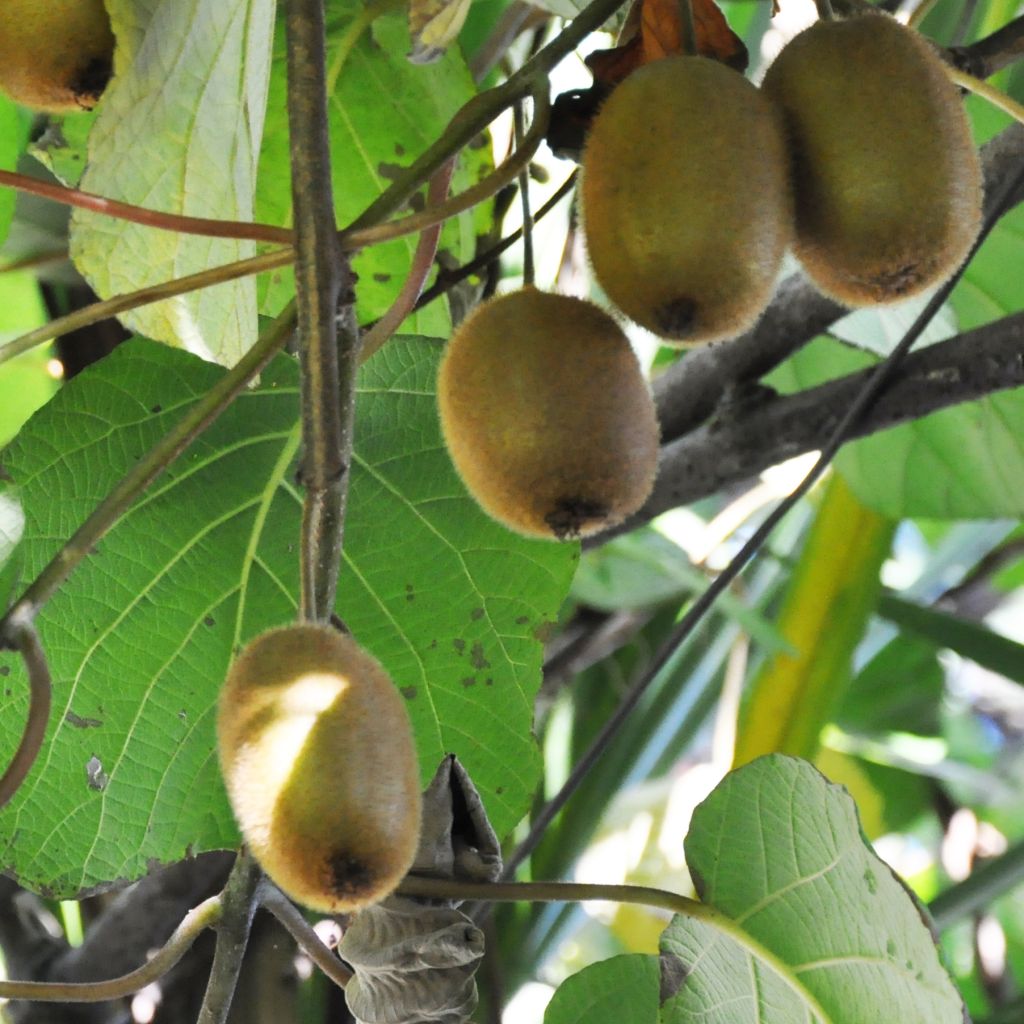

Kiwi Tomuri (mâle) Bio
Organic Kiwi Plant Tomuri (male) - Actinidia deliciosa
Actinidia deliciosa Tomuri mâle
Chinese Gooseberry, Kiwi Fruit, Kiwi
This item cannot be shipped to the selected country
Delivery charge from €5.90
More information
Delivery charge from €5.90
More information
Schedule delivery date,
and select date in basket
This plant carries a 6 months recovery warranty
More information
We guarantee the quality of our plants for a full growing cycle, and will replace at our expense any plant that fails to recover under normal climatic and planting conditions.
From €5.90 for pickup delivery and €6.90 for home delivery
Express home delivery from €8.90.
Description
The organic Kiwi deliciosa Tomuri Male is a vigorous deciduous liana, known for its decorative flowering and lush foliage. This plant is male, allowing the pollination of 5 to 7 female Hayward kiwi plants, as it blooms at the same time. Its twisted stems are adorned with large round leaves, carried by pretty red and fuzzy petioles, and they wrap around their support if properly trained. Flowering occurs in late spring, with large cream-white fragrant flowers and golden fertile stamens. This Actinidia prefers rich, well-drained and moist soils in sunny to semi-shaded locations, sheltered from heavy frosts.
Actinidia deliciosa Tomuri belongs to the family of Actinidiaceae. It is derived from Actinidia chinensis, which originates from central and western regions of China. This vigorous liana can grow up to 3 metres (10 feet) per year under favourable conditions, reaching a height of 5 to 7 metres (16 to 23 feet) and a spread of 6 to 7 metres (20 to 23 feet). Its long stems can reach the thickness of a finger, forming an framework capable of breaking a fragile support. From spring onwards, it bears large oval and entire leaves, ranging from bright green to dark, with a matte texture, covered, like the petioles and stems, with small red hairs. The leaves are wide and ovate on sterile shoots, more rounded on fertile shoots. Starting from the third or fourth year of cultivation, flowers appear on the current year's branches. Flowering takes place in May-June, with fragrant flowers having wide dentate cream-white petals, turning buff, measuring 4 to 5cm (2in) in diameter, surrounding a core of fertile golden stamens. Not all kiwis are self-fertile, meaning that male flowers with stamens and female flowers with pistils develop on separate plants. Therefore, it is necessary to plant kiwis of both sexes to obtain fruits.
The organic Tomuri kiwi is an expansive plant that requires space to establish itself. It is necessary to provide a solid and sufficiently large support to accommodate at least one female plant and one male plant, which should be trained on a wall with a strong wire, a pergola, or two tree trunks. It is also a very ornamental climber, due to its exotic appearance and lush foliage. This plant is not very hardy (-12/-15°C (10.4/5°F)), so it should be planted in a location sheltered from cold winds. The soil should be rich, remain moist in summer, and preferably be free of limestone.
Organic Kiwi Plant Tomuri (male) - Actinidia deliciosa in pictures
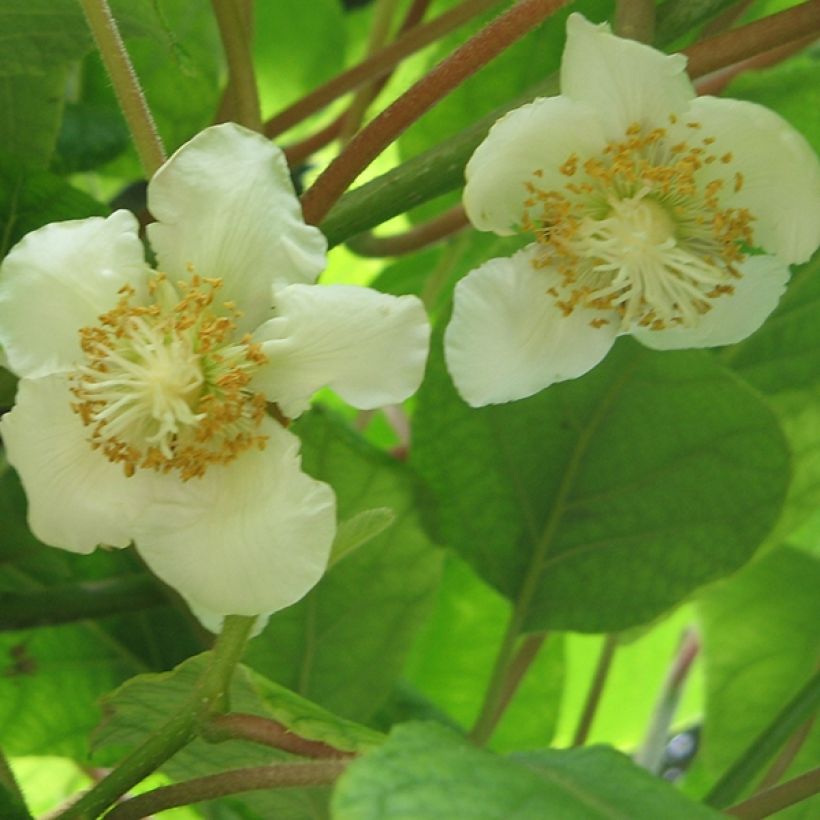

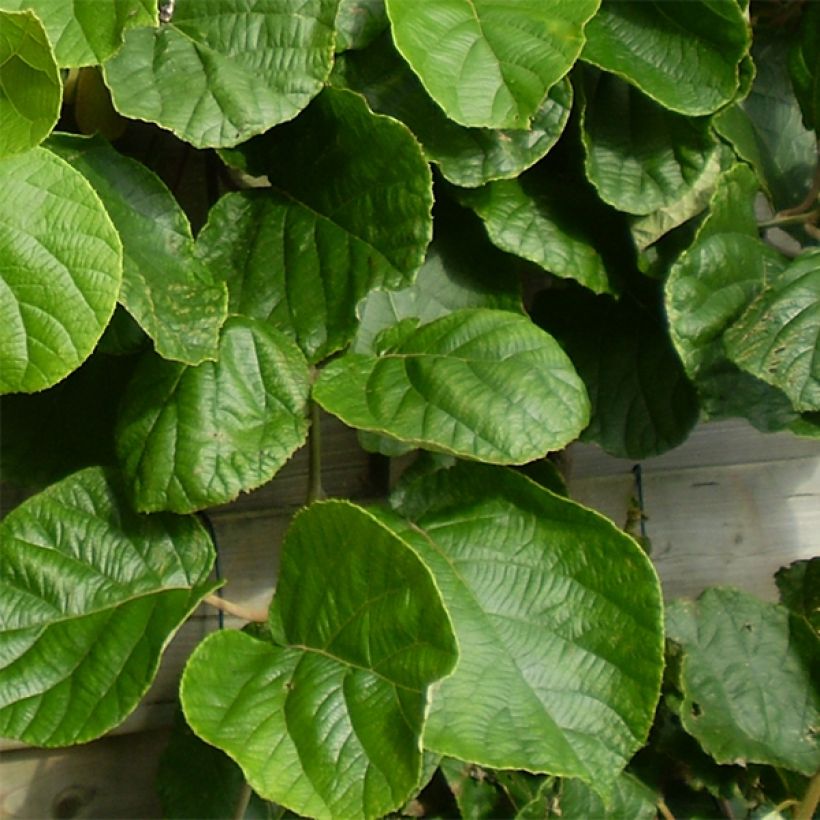

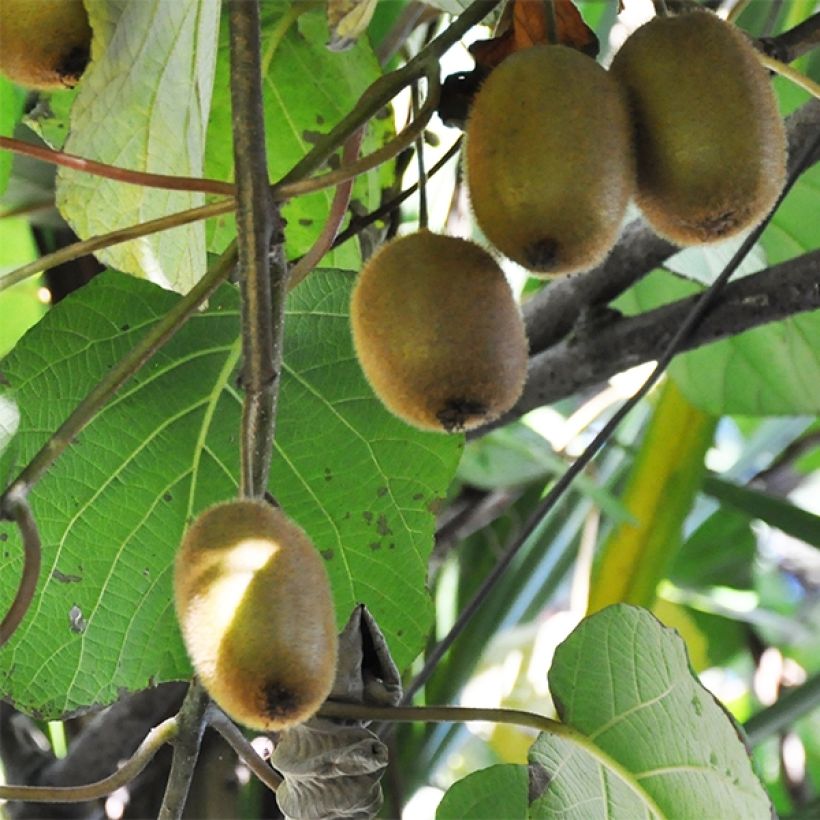

Plant habit
Flowering
Foliage
Botanical data
Actinidia
deliciosa
Tomuri mâle
Actinidiaceae
Chinese Gooseberry, Kiwi Fruit, Kiwi
China
Other Kiwi bush
Planting and care
Plant the Tomuri Organic kiwi ideally in autumn, but it can be transplanted throughout the year outside of freezing periods, in a deep, well-drained, loose, fertile soil with not too much limestone, remaining moist. Dig a hole and pour the contents of a bag of enriched horticultural compost into it, burying the root ball not too deeply. The neck of the plant should be at ground level. Firmly tamp down and water generously. Planting distance between two plants: 2 metres (7 feet). Plant one male Tomuri plant for every 5 or 6 female Hayward plants. Mulch the plants for the first three winters. This kiwi appreciates sunny situations, but not scorching ones. Actinidia deliciosa Tomuri is not very susceptible to insects and diseases, but it can still be affected by red spider mites. These mites thrive in a hot and dry environment. This liana will greatly appreciate the foliage and soil being sprayed with water in the evenings, lightly but regularly, in order to control mites and to cool the plant in case of high heat. Maintenance treatment: In late winter, bury a light layer of organic fertiliser or well-decomposed manure at the base of the plant. Train the stems as they grow, tying them loosely. They will wind around the support.
Pruning of the male Tomuri Organic kiwi consists of shortening the current year's branches to promote the growth of young flowering branches the following spring, as good flowering is important for effective pollination of the female plants.
Planting period
Intended location
Care
This item has not been reviewed yet - be the first to leave a review about it.
Berries
Haven't found what you were looking for?
Hardiness is the lowest winter temperature a plant can endure without suffering serious damage or even dying. However, hardiness is affected by location (a sheltered area, such as a patio), protection (winter cover) and soil type (hardiness is improved by well-drained soil).

Photo Sharing Terms & Conditions
In order to encourage gardeners to interact and share their experiences, Promesse de fleurs offers various media enabling content to be uploaded onto its Site - in particular via the ‘Photo sharing’ module.
The User agrees to refrain from:
- Posting any content that is illegal, prejudicial, insulting, racist, inciteful to hatred, revisionist, contrary to public decency, that infringes on privacy or on the privacy rights of third parties, in particular the publicity rights of persons and goods, intellectual property rights, or the right to privacy.
- Submitting content on behalf of a third party;
- Impersonate the identity of a third party and/or publish any personal information about a third party;
In general, the User undertakes to refrain from any unethical behaviour.
All Content (in particular text, comments, files, images, photos, videos, creative works, etc.), which may be subject to property or intellectual property rights, image or other private rights, shall remain the property of the User, subject to the limited rights granted by the terms of the licence granted by Promesse de fleurs as stated below. Users are at liberty to publish or not to publish such Content on the Site, notably via the ‘Photo Sharing’ facility, and accept that this Content shall be made public and freely accessible, notably on the Internet.
Users further acknowledge, undertake to have ,and guarantee that they hold all necessary rights and permissions to publish such material on the Site, in particular with regard to the legislation in force pertaining to any privacy, property, intellectual property, image, or contractual rights, or rights of any other nature. By publishing such Content on the Site, Users acknowledge accepting full liability as publishers of the Content within the meaning of the law, and grant Promesse de fleurs, free of charge, an inclusive, worldwide licence for the said Content for the entire duration of its publication, including all reproduction, representation, up/downloading, displaying, performing, transmission, and storage rights.
Users also grant permission for their name to be linked to the Content and accept that this link may not always be made available.
By engaging in posting material, Users consent to their Content becoming automatically accessible on the Internet, in particular on other sites and/or blogs and/or web pages of the Promesse de fleurs site, including in particular social pages and the Promesse de fleurs catalogue.
Users may secure the removal of entrusted content free of charge by issuing a simple request via our contact form.

































